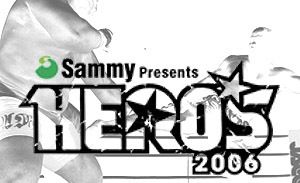Kickboxing
Kickboxing is a generic term for a sporting martial art that, while similar to boxing, uses the feet as well as the hands for striking. Kickboxing can be practiced for general fitness, or as a full-contact combat sport. The (male) boxers are bare chested, bare foot and wear a boxershort. The female boxers sometimes wear a tank top and shorts.
Forms of kickboxing that have been labelled under this term [1] include:
- Adithada (Indian kickboxing) — A form of kickboxing that uses knee, elbow and forehead strikes
- Pradal Serey (Khmer kickboxing) — A possible predecessor of Muay Thai
- Muay Thai (Thai boxing/kickboxing) — Strong emphasis on knee and elbow strikes
- Savate (French kickboxing) — Allows the use of shoes
- San Shou/ Sanda (Chinese Kickboxing) — Takedowns and throws are legal
- Lethwei (Burmese Kickboxing) — Any part of the body may be used to strike and be struck
- Japanese kickboxing — Similar to Muay Thai, but different point system is taken
- Full Contact Karate (American Kickboxing) — Most of the time padding and in some cases body armour is used
- Shoot boxing — A Japanese form of kickboxing which allows throwing and submission while standing similar to San Shou
There are many additional derivatives of these forms, as well as combined styles which have been used in specific competitions (e.g. K-1). The rules of 'kickboxing' also vary between these different styles.
The term kickboxing is disputed and has come to become more associated with the Japanese and American variants. It must be noted that many of the above styles do not consider themselves to be 'kickboxing' as such, although the public uses the term generically to refer to all these martial arts. The term itself was created by the Japanese boxing promoter Osamu Noguchi for a variant of Muay Thai and Karate that he created in the 1950s; this term was later used by the American variant. When used by the practitioners of these two styles, it tends to refer to them specifically rather than the martial arts they were derived from.
- The rest of this article deals with the Japanese and American derivatives of 'kickboxing'. For the other martial arts see their relevant articles.
History
Kickboxing, as a derivative of Boxing, Karate, Muay Thai as well as other styles, was created to compete effectively against these martial arts. The initial development of the styles (as well as the name) was in Japan. However, there were also similar influences taking hold in the United States in 1974 (Wako), and martial artists from many disciplines toured both areas allowing the development of a common kickboxing standard.
Initial Japanese development
Kickboxing (as a specific martial art) has its roots in Muay Thai. It was developed as a competitive sport to oppose Muay Thai by Japanese boxing promotor Osamu Noguchi. He wanted to introduce Japan the Muay Thai style of fighting that he had seen in Thailand. The 3 Muay Thai fighters were taken to Japan in 1966, and fought against 3 karate fighters from Oyama dojo (Kyokushin later). Japan won by 2-1 then. Noguchi and Kenji Kurosaki (Kyokushin karate instructor) studied Muay thai and developed a combined martial art which Noguchi named kick boxing. However, throwing and butting were allowed in the beginning to distinguish from Muay Thai style. This was repealed later. The Kickboxing Association was founded in Japan soon after this. Kickboxing boomed and became popular in Japan as it began to be broadcasted on TV. Tadashi Sawamura was an especially popular early kickboxer. However, the boom was suddenly finished and became unpopular after Sawamura was retired. Kickboxing had not been on TV until K-1 was founded in 1993.
In 1993, as Kazuyoshi Ishii (founder of Seidokan karate) produced K-1 under special kickboxing rules (No elbow and neck wrestling) in 1993, kickboxing became famous again.
The sport has spread through North America, Europe, and Australia.
Spreading to Europe, Australia, and North America
Jan Plas, the Dutch kickboxer founded Mejiro jym with some Muay Thai pioneers in Netherlands, 1978 after he learned kickboxing from Kenji Kurosaki in Japan. In addition, he also founded NKBB (The Dutch Kickboxing Association) which is the first kickboxing organization in Netherlands in 1978. The sport took off in the U.S. with the popularity and success of Bill "Superfoot" Wallace" in the 1970s.
As of 2006, the new world champion in American kickboxing is the Pennsylvanian Steve "Slick Poon" Parker.
Rules
Japanese style kickboxing
This is almost same as Muay Thai but there are differences between them.
- Similarities
- time: three minutes × five rounds
- allowed to attack with elbow
- allowed to attack with knee
- allowed to kick the lower half of the body except crotch
- allowed to do neck-wrestling (folding opponent's head with arms and elbows to attack the opponent's body or head with knee-strikes)
- head butts and throws were banned in 1966 for boxer safety
- Differences
- No ram muay before match
- No Thai music at the match
- Interval takes one minute only
- Point system:
In muay thai, kicking to mid-body and head are judged highly. Moreover, kicking is still judged highly even if kicking was blocked. And punching is judged low. But they aren't in kickboxing.
- See also K-1
American and Australian style kickboxing
These are rules used in American and Australian Full Contact Karate. Opponents are allowed to hit each other with fists and feet, striking above the hip. Using elbows or knees is forbidden and the use of the shins is seldom allowed. This is in contrast to Muay Thai where the use of elbows and knees are allowed; in fact some Muay Thai practitioners consider kickboxing a "watered down" version of Muay Thai. Fighters and promoters can agree to various rules including kicks only above the waist, kicks anywhere, no knee strikes, knees only to the body, and so on.
Bouts are usually 3 to 12 rounds (lasting 2 - 3 minutes each) for amateur and professional contests with a 1-minute rest in between rounds. The round durations and the number of rounds can vary depending on the stipulations agreed to before hand by each fighter or manager. A winner is declared during the bout if there is a submission (fighter quits or fighter's corner throws in the towel), knockout (KO), or referee stoppage (Technical Knock Out, or TKO). If all of the rounds expire with no knockout then the fight is scored by a team of 3 judges. The judges determine a winner based on their scoring of each round. A split decision indicates a disagreement between the judges, while a unanimous decision indicates that all judges saw the fight the same way and all have declared the same winner.
European style kickboxing
Originally, American style kickboxing was formed with Muay thai and Japanese kickboxing.
- time: 3 minutes × 5 rounds
- not allowed to attack to with elbow
- allowed to attack with knee
- allowed to kick the lowerhalf of the body except crotch
- allowed to do neck-wrestling but frequncy is limited.
- headbutts and throws are not allowed
Governing Bodies
Kickboxing, like boxing, has many governing bodies leaving no organisation in overall control.
Kickboxing now has a formally recognised governing body, WAKO,
| Governing Body | Website |
|---|---|
| World Federation of Kickboxing (W.F.K.) | http://www.wfk-gov.com/ |
| Irish Kickboxing Federation (IKF) The premier kickboxing governing body in Ireland | http://indigo.ie/~ganteora |
| The World Kickboxing & Karate Association (W.K.A.) | http://www.kickboxing-wka.co.uk/ |
| World Kickboxing Network (W.K.N.) | http://www.worldkickboxingnetwork.com/ |
| World Kickboxing Union (W.K.U.) | http://www.wku-kickboxing.com/ |
| World Association of Kickboxing Organizations (W.A.K.O.) | http://www.wako-fikeda.it/wako/default.htm |
| International Kickboxing Federation (I.K.F.) | http://www.ikfkickboxing.com/ |
| International Sport Kickboxing Association(I.S.K.A.) | http://www.iska.com/ |
| World Kickboxing Federation (W.K.F.) | http://www.wkf-kickboxing.com/ |
| Professional Kickboxing Association (P.K.A) | http://www.pka-kickboxing.com/ |


















